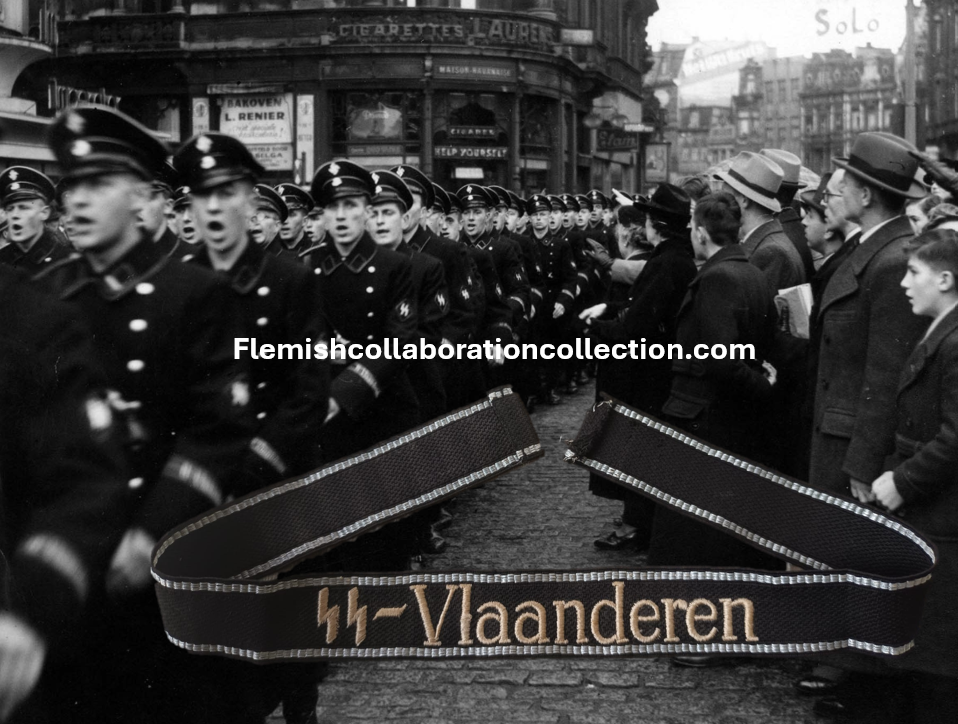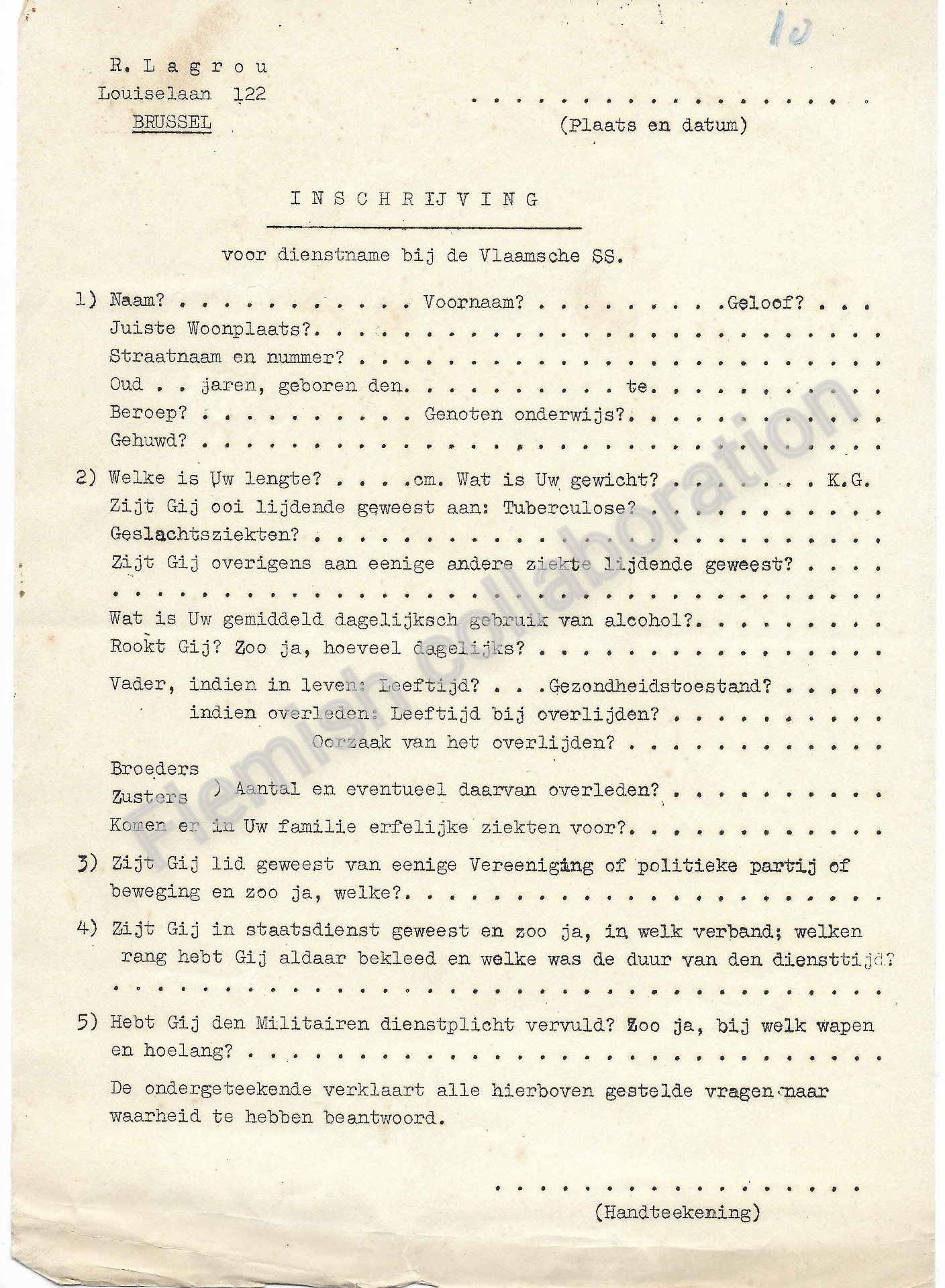SS Vlaanderen

The Algemeene SS-Vlaanderen was established on 30.10.1940, at the initiative of the German SS leadership. The initiators on the Flemish side were Ward Hermans and René Lagrou. Lagrou became its first leader, while Hermans became the editor-in-chief of De SS-man, the propaganda magazine of the SS in Flanders, which appeared from December 1940. Members of the Algemeene SS-Vlaanderen received paramilitary training and ideological education. Through the political nature of the SS-Vlaanderen, the German SS tried to gain more influence in Flanders. Algemeene SS-Vlaanderen viewed Flanders as part of the Greater German Reich, which would be incorporated into the Reich once the war ended. In any case, no autonomy for Flanders could be guaranteed.
The SS-Vlaanderen consisted of 4 Stormbannen:
• Stormban I Province of Antwerp
• Stormban II Province of East Flanders
• Stormban III Province of West Flanders
• Stormban IV Provinces of Brabant and Limburg.
A Stormban was divided into multiple Storms. Stormban I (Province of Antwerp) consisted of four Storms (I/1, I/2, I/3, and I/4).
Within the Algemeene SS in Flanders, alongside the active SS-men, there were also the Protective Members (Beschermende Leden, BL). They paid a contribution, were allowed to wear a small badge with SS runes, but had no uniform, were not subject to strict service obligations, and had fewer rights. Women could also join. The BL were often regarded as second-class members and were excluded from training evenings or exercises of the active SS.
Vlaanderen Korps

What made Flanders unique was the creation of the SS militia, later renamed the Vlaanderen-Korps (Flandernkorps) on 1 August 1942. This corps offered a place for those who did not meet the strict racial and physical requirements of the regular SS. For example, an SS-man had to be between 17 and 35 years old, at least 1.70 m tall, and meet the "Aryan" racial standards. Those who were too short, too old, or otherwise not fully deployable because of their circumstances were placed in the Vlaanderen-Korps. In practice, this corps functioned as an auxiliary unit of the SS for those who were not admitted to the elite core. They did participate in drills and marches, but less intensively than the real SS-men.
The Vlaanderen-Korps was thus a separate militia within the Algemeene-SS Vlaanderen and had no equivalent in Germany, the Netherlands, Denmark, or Norway. This made it a unique, but at the same time contradictory, construction: the SS presented itself as an elite organization, while this corps admitted members who did not meet those elitist requirements. (1)
Right: Early SS VLaanderen registration form from 1940.
Below: "Marschbefehl" of the Germanische-SS Flandern – Sturmbann I/1 (Germaansche-SS Vlaanderen, Stormban I/1). - Antwerp.

